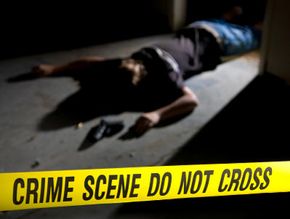Rigor mortis is the reason why the word "stiff" is a slang term for a dead body. Two or three hours after a person or animal dies, the muscles start to stiffen. This phenomenon progresses in a downward, head-to-toe direction. In 12 to 18 hours the body is, as the saying goes, stiff as a board. At this stage, you can move the joints only by force, breaking them in the process.
It takes about two days for rigor mortis to fade, and once it does, decay sets in. If the body isn't embalmed or cooled to 38 degrees Fahrenheit (3.3 degrees Celsius) or below, it will quickly decompose.
Advertisement
To people who work in mortuaries, rigor is an unimportant, temporary condition. It may require them to massage the deceased's extremities to reduce stiffness and allow for easier, more effective embalming. But to police, medical examiners and lawyers in the criminal justice system, rigor mortis has much more significance. It's a clue to understanding the circumstances of someone's unexpected -- and possibly violent -- death. Rigor mortis is a piece of the forensic jigsaw puzzle, and combined with other details, it can help detectives and medical examiners figure out what happened.
But what turns flexible joints into immovable structures, and why does the process reverse itself later? Next, we'll look at why muscle tissue goes through this transformation after death.
Advertisement


